Schneider Shorts of 29 March 2024 – German medical elites special: with Gender, Diversity and a retirement party in Ulm, an incomplete investigation in Göttingen, naughty mentees of a Heidelberg pharmacologist, plus investigation outcomes in USA, King’s first retraction, and why you must have a coffee right now.
Table of Discontent
Science Elites
- How many children did you heal? – Klaus-Michael Debatin festively retires
- Gender and Diversity – Debatin’s successor Hartmut Döhner published great science also
- Overseen by an Ombudsperson – Katrin Schäfer, Gerd Hasenfuss and the half-investigation in Göttingen
- Certainly not forgeries – Michael Wink, his former mentees, and papermills
- Choi did not commit research misconduct – PETA sues NIH over former Weill Cornell dean
- Data-reliability concerns – On second try, Rochester finds Ranga Dias guily
Retraction Watchdogging
- Nonstandard phrases – first retraction for King of Papermillers Rafael Luque
- Student, meet bus – Rajesh Katare ferreted out the real culprit
Science Breakthroughs
- Four cups a day keep the funeral away – drink coffee or die of cancer
Science Elites
How many children did you heal?
Klaus-Michael Debatin, the grey eminence of Germany’s dodgy cancer research, retires. No, not because of his massive PubPeer record or because of the public scandal of his mentee Simona Fulda, who had to resign as President of the University of Kiel.
Simone Fulda: Open4Work!
“I am taking this step with a heavy heart and a sense of responsibility for the university since a sufficient foundation of mutual trust no longer remained with some parts of the university to ensure successful cooperation”, – Simone Fulda
On 15 April 2024 Debatin, aged 71, retires as Director of the Clinic for Pediatric and Adolescent Medicine at the Ulm University Hospital, after 27 years in this job -the announcement was celebrated by local newspapers (e.g, here and here). Noteworthy: as Fulda was publicly dragged by the German media through the mud, Debatin was never mentioned even once. I guess his lawyers are that good. But not just lawyers – its seems, the University of Ulm is determined to defend the reputation of its former Vice-President. The university is following a two-pronged attack on the reality of fake western blots: sabotaging their own investigation of Debatin’s papers (read here) and pushing hagiographic PR trash into public media to create a Debatin personality cult.
Hence, this bizarre interview in a regional newspaper, titled “How this man managed to ensure that fewer children die of cancer“, which the University of Ulm acknowledged to me to have supported.

The Südwest Press article from 21 March 2024 looks like one of those prepared “interviews” which are offered gratis to journalists eager to fill their pages with any content. The newspaper was kind enough to share the paywalled full text with me, they are apparently that proud. We are informed that Debatin doesn’t retire in full:
“Debatin will remain available for paediatric medicine in another function in Ulm for a while longer, he will set up the Center for Pediatric and Adolescent Health”
The interview about “cancer and Eureka moments in the lab” contains tough and inquisitive questions to Debatin like:
- “Professor Debatin, on 15 April you will retire at the age of 71. Prior to that, are you really going on a business trip?” (Debatin’s names a hemato-oncology course in Sorrento, Italy: “I’m helping to organize it and give a lecture there: “How to kill a leukemia cell?“
- “Have you achieved everything you wanted to achieve?” (Debatin: “I have a dream job. I get to do research and treatment, i.e. patient-oriented research. That is very satisfying. Of course, I wasn’t born with the idea to become a head physician and clinic director.”
- “Let’s start by talking about your research: What kind of study, which project are you particularly proud of?” (Debatin: “we then found out how to trigger programmed cell death in cancer – apoptosis.”
- “Thanks to your research results, can children with cancer be better helped today?” (Debatin doesn’t deny it)
- “Can you say how many children you healed?” (Debatin’s answer: “over a thousand“
- “Do you receive letters of gratitude from parents or children? (Debatin gives examples)
- “In addition to your medical work, you took over the management of the university hospital In 2013, during a difficult phase. How did this come about? Why did you do that?” (Debatin explains how he sacrificed himself to take responsibility)
- “What are your plans for retirement? Are there any projects?” (Debatin announces to continue taking care of his medical centre, but also of his children and grandchildren, and to play Beethoven on piano)
- “Not planning any extended trips with your wife?” (Debatin: “no. However, the idea of cell death antibodies came to me on the beach on vacation in Spain“
In this regard, we learn that Germany’s greatest cancer researcher whose discoveries saved the lives of thousands of children, currently reads the book “The Age of Insight” by the Nobelist Eric Kandel, probably to prepare himself to receive a Nobel Prize of his own. Indeed, many Nobelists claim their genius idea arrived to them during a vacation in an exotic place. Debatin has his Nobel myth ready. Hello, Stockholm?
Fulda & Debatin: Reproducibility of Results in Medical and Biomedical Research
“Basic and advanced training for researchers should focus much more on self-reflection, openness and a culture of error acceptance.”
More and more image duplications and fudged gels are being found in Debatin’s papers (currently around 30 of them on PubPeer). Not just old stuff! Here, from 2018, the last author is Debatin’s mentee and his lab co-head and successor, Mike-Andrew Westhoff:
Melanie Mettang , Viola Meyer-Pannwitt , Georg Karpel-Massler , Shaoxia Zhou , Neil O. Carragher , Karl Josef Föhr , Bernd Baumann , Lisa Nonnenmacher , Stefanie Enzenmüller , Meike Dahlhaus , Markus D. Siegelin , Sebastien Stroh , Daniel Mertens, Pamela Fischer-Posovszky, E. Marion Schneider , Marc-Eric Halatsch , Klaus-Michael Debatin, Mike-Andrew Westhoff Blocking distinct interactions between Glioblastoma cells and their tissue microenvironment: A novel multi-targeted therapeutic approach Scientific Reports (2018) doi: 10.1038/s41598-018-23592-z
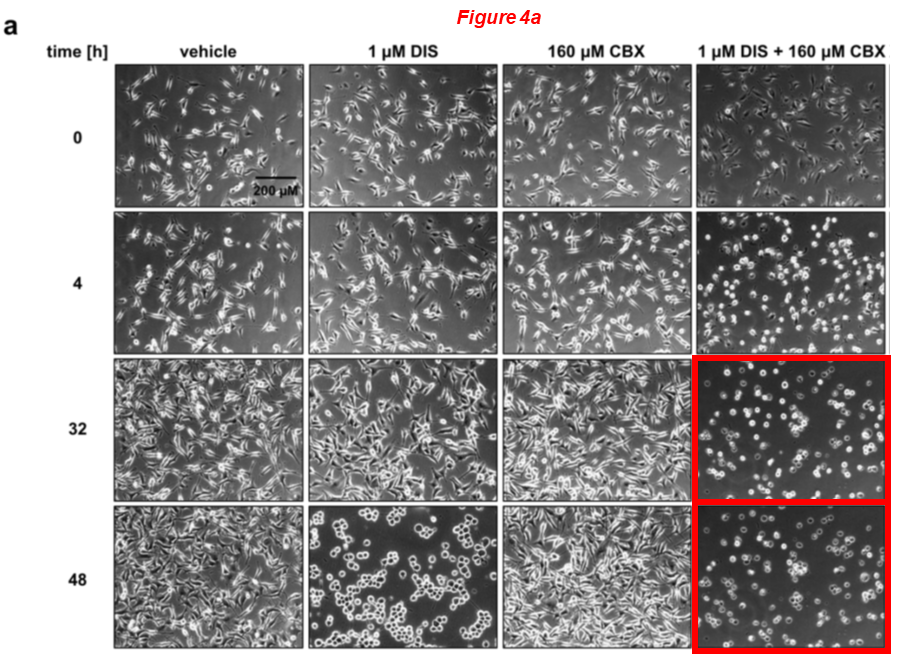
Aneurus inconstans “Figure 4a: although not identical, micrographs of DIS+CBX treated cells at 32 and 48 hours appear to be two takes of the same field of view, likely taken a few seconds/minutes apart (red boxes).”
Westhoff is an adjunct professor, his career in Ulm is totally dependent on Debatin. Gosh, what plans does our retiree have for his right-hand man now?

Figures 3B and 7

I don’t think you will ever read about Debatin’s trash science in the German media. He retires now, with brass orchestra and salute (probably not just metaphorically), just as I expected. Case closed for the University of Ulm.
Gender and Diversity
We remain in Ulm. Aneurus Inconstans was so awed by Debatin’s achievements that he also looked into his papers, and then into the papers of Debatin’s right-hand man in Ulm, Mike-Andrew Westhoff, whom you met above. Westhoff is indeed a small fish, but with him, Aneurus caught a much bigger fish in the Ulm pond, via this paper:
Viola Close , William Close , Sabrina Julia Kugler , Michaela Reichenzeller , Deyan Yordanov Yosifov , Johannes Bloehdorn , Leiling Pan , Eugen Tausch , Mike-Andrew Westhoff , Hartmut Döhner , Stephan Stilgenbauer, Franz Oswald, Daniel Mertens FBXW7 mutations reduce binding of NOTCH1, leading to cleaved NOTCH1 accumulation and target gene activation in CLL Blood (2019) doi: 10.1182/blood-2018-09-874529

And the big fish is Hartmut Döhner, director of the university’s inner medicine clinic, former director (now deputy director) of the Comprehensive Cancer Center Ulm – in short one of the biggest bigwigs of Ulm university medicine. In 2014, the University of Ulm proudly announced:
“Professor Hartmut Döhner, Medical Director of the Clinic for Internal Medicine III, will be the new Vice President for Medicine, Gender and Diversity at Ulm University. The internist succeeds Professor Klaus-Michael Debatin, who has held this position since 2010.“
It seems, Döhner was just briefly holding Debatin’s seat warm, because the latter became Vice-Pesident of Medicine, Gender and Diversity again, and again.

Rest assured that Döhner will have a word in how his university deals with the Debatin affair. So far, they announced to dismiss all evidence because too old (both the evidence and Debatin).
Now, here is a paper from Döhner’s youth, back at the German Cancer Research Centre (DKFZ) in Heidelberg:
Hartmut Döhner, Thorsten Pilz , Konstanze Fischer , Georges Cabot , Daniela Diehl , Thomas Fink , Stephan Stilgenbauer , Martin Bentz , Peter Lichter Molecular Cytogenetic Analysis of RB-1 Deletions in Chronic B-Cell Leukemias Leukemia & Lymphoma (1994) doi: 10.3109/10428199409114145
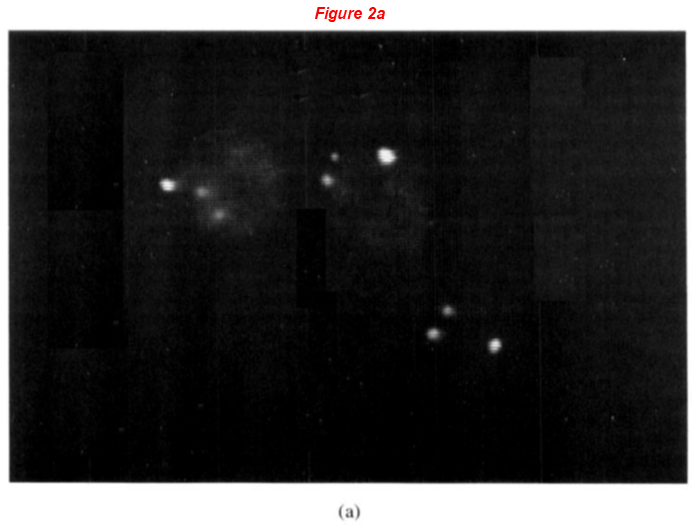
Aneurus inconstans: “This is Figure 2A as published”
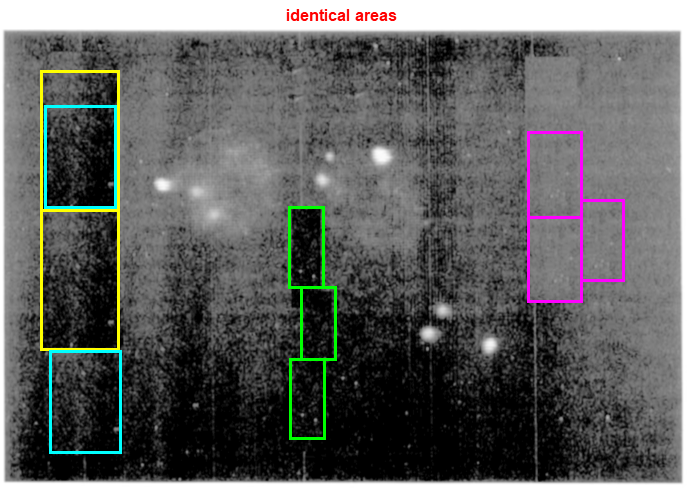
I believe this hilarious forgery was possibly done with scissors and glue, the old fashioned way, before Photoshop became a standard tool in cancer research. A few years later, Döhner published this advanced digital artwork:
Thomas F.E. Barth , Hartmut Döhner , Claudius A. Werner , Stephan Stilgenbauer , Magdalena Schlotter , Michael Pawlita , Peter Lichter, Peter Möller , Martin Bentz Characteristic Pattern of Chromosomal Gains and Losses in Primary Large B-Cell Lymphomas of the Gastrointestinal Tract Blood (1998) doi: 10.1182/blood.v91.11.4321
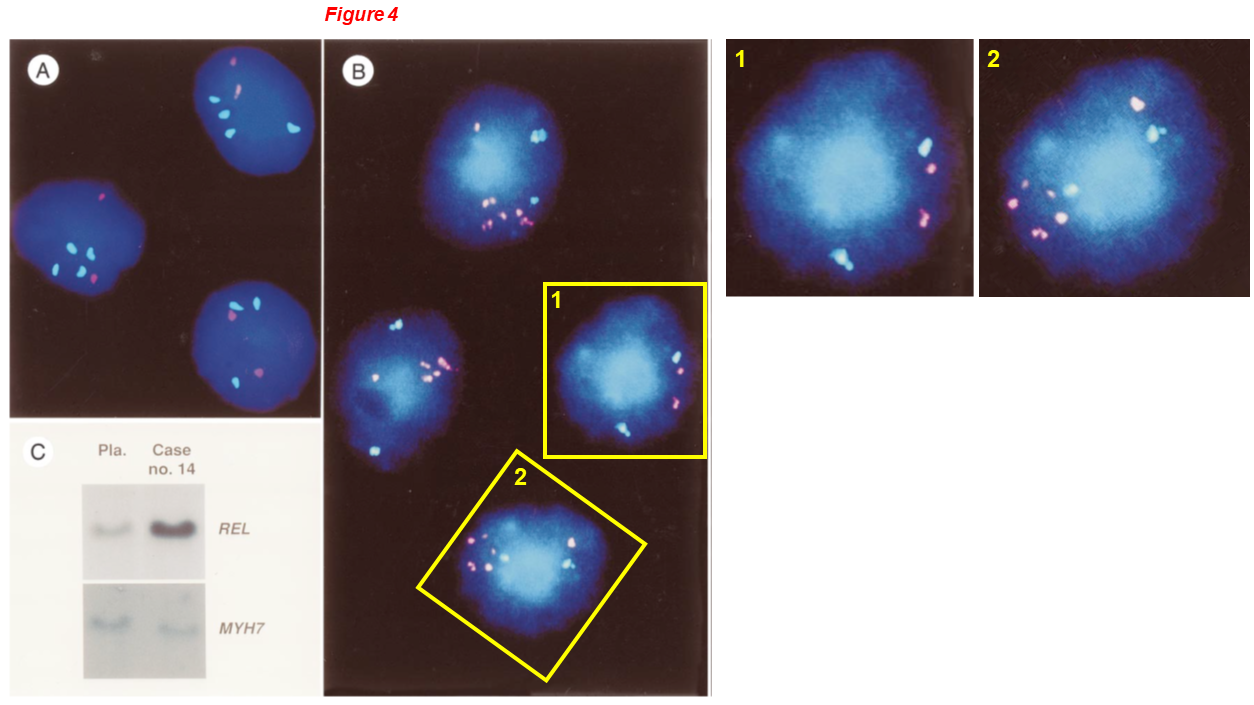
Döhner and his former mentor in Heidelberg Peter Lichter did not reply to my email. But there will be some Gender and Diversity after all: Herr Prof Dr med Hartmut Döhner has a wife – Frau Prof Dr med Konstanze Döhner, who is a senior physician in the inner medicine clinic led by her husband. In 2021, the couple was jointly awarded the Johann Georg Zimmermann Medal by the Hannover Medical School (MHH) for “for their outstanding lifetime achievements in the service of cancer research.“
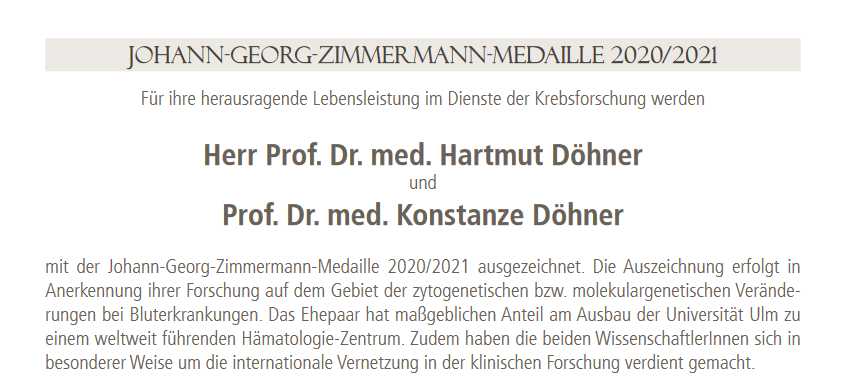
Now, following is Frau Professor’s research from her America period, with a certain William Hahn of Dana Farber Cancer Institute (read the article below).
Dana-Farberications at Harvard University
“Imagine what mistakes might be found in the raw data if anyone was allowed to look!” – Sholto David
This cancer therapy study in Cell was debunked twice, by Babij et al 2011 and Luo et al 2012, which might explain the dodgy gels:
Claudia Scholl , Stefan Fröhling , Ian F. Dunn , Anna C. Schinzel , David A. Barbie , So Young Kim , Serena J. Silver , Pablo Tamayo , Raymond C. Wadlow , Sridhar Ramaswamy , Konstanze Döhner , Lars Bullinger , Peter Sandy , Jesse S. Boehm , David E. Root , Tyler Jacks , William C. Hahn, D. Gary Gilliland Synthetic lethal interaction between oncogenic KRAS dependency and STK33 suppression in human cancer cells Cell (2009) doi: 10.1016/j.cell.2009.03.017
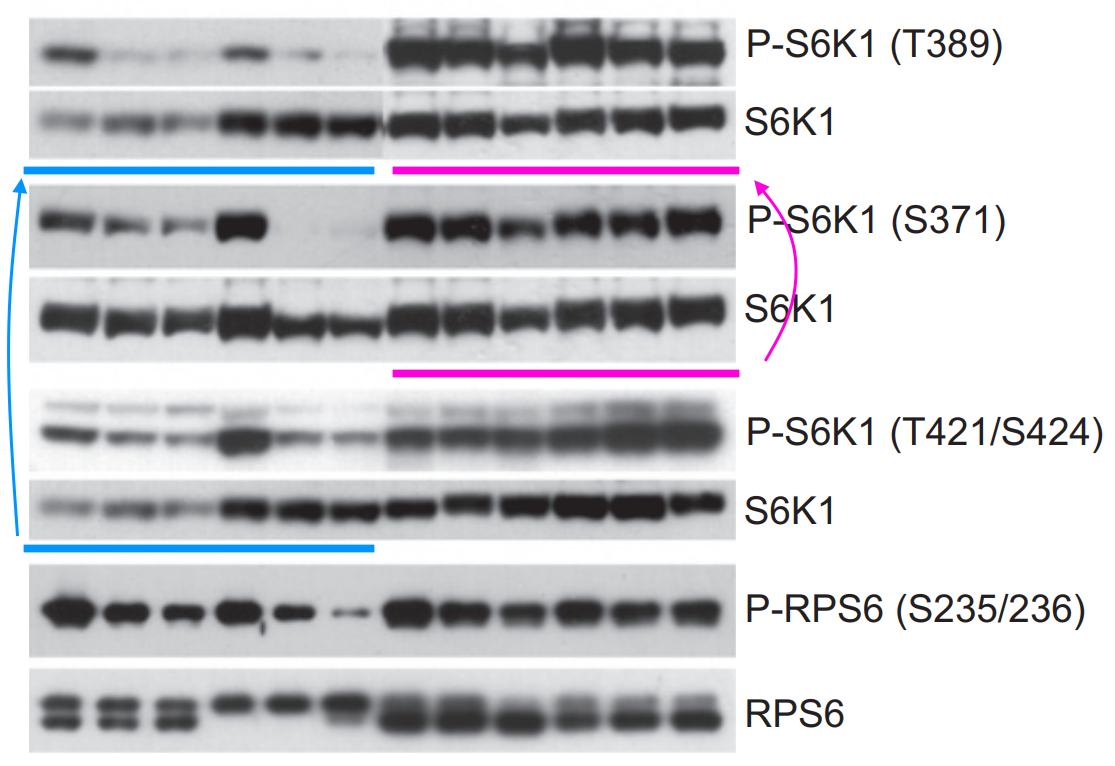
Mycosphaerella arachidis: “I can’t see any particular reason to create a third S6K1 blot out of the two others.”
I know why the S6k1 blot had to fabricated. There is something about this protein of mTOR pathway which regularly leads to its data getting forged. Read here:
mTOR: conclusions not affected?
David Sabatini, remember that story? Well, it seems the conclusions were not affected. I take an ill-informed look at the mTOR signalling research field, to understand how photoshopped data gets to be independently verified by other labs.
Overseen by an Ombudsperson
We remain on the topic of German medical elites. Meet Prof. Dr. med. Katrin Schäfer, professor for cardiovascular medicine at the University Clinic Mainz.
She has several papers on PubPeer, one was already corrected. This was flagged on PubPeer in November 2019, Schäfer’s affiliation at that time was the University of Göttingen:
Rajinikanth Gogiraju , Marco R. Schroeter , Magdalena L. Bochenek , Astrid Hubert , Thomas Münzel , Gerd Hasenfuss , Katrin Schäfer Endothelial deletion of protein tyrosine phosphatase-1B protects against pressure overload-induced heart failure in mice Cardiovascular Research (2016) doi: 10.1093/cvr/cvw101


The Correction from July 2020 stated:
“The authors regret that that in Figure 7A the image showing p-Smad2 in the End.PTP1B-KO sham group (third column, second row) is a duplicate of findings in an End. PTP1B-WT mouse (first column, second row). This was inserted during the preparation of the figure in error and has now been corrected.
This matter was investigated by the ESC Journals Family Ethics Committee, who recommended this resolution.
This change does not affect the overall scientific message of the paper.”
For some reason, the Family Ethics Committee chose against correcting Figure 2 and 5. Prof Schäfer might need to correct more to preserve the overall scientific message. Here is another artwork of Schäfer’s Götingen period, flagged in October 2019:
Nana-Maria Heida , Maren Leifheit-Nestler, Marco R. Schroeter , Jan-Peter Müller , I-Fen Cheng , Sarah Henkel , Anne Limbourg , Florian P. Limbourg , Frauke Alves , James P. Quigley , Zaverio M. Ruggeri , Gerd Hasenfuss , Stavros Konstantinides , Katrin Schäfer Leptin enhances the potency of circulating angiogenic cells via src kinase and integrin (alpha)vbeta5: implications for angiogenesis in human obesity Arteriosclerosis Thrombosis and Vascular Biology (2010) doi: 10.1161/atvbaha.109.192807
Fig 5F, duplicated gel band
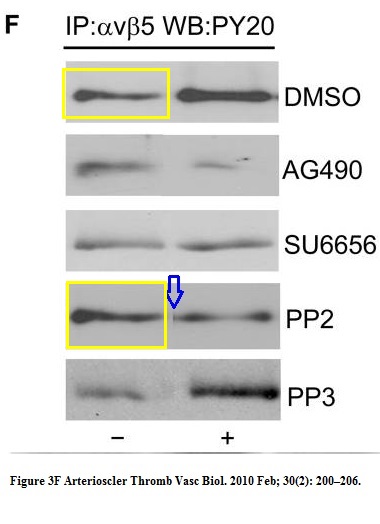
Similar issue here, flagged in November 2019:
Maren Leifheit-Nestler, Nana-Maria Wagner, Rajinikanth Gogiraju , Michael Didié , Stavros Konstantinides , Gerd Hasenfuss , Katrin Schäfer Importance of leptin signaling and signal transducer and activator of transcription-3 activation in mediating the cardiac hypertrophy associated with obesity Journal of Translational Medicine (2013) doi: 10.1186/1479-5876-11-170
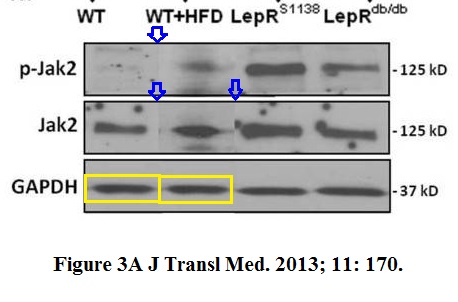
Fig 3A, duplicated gel band
And this was Made in Göttingen, and reported on PubPeer reported in October 2019:
Marco R. Schroeter , Norman Eschholz , Sebastian Herzberg , Isabel Jerchel , Maren Leifheit-Nestler , Frauke S. Czepluch , Georgios Chalikias , Stavros Konstantinides , Katrin Schäfer Leptin-dependent and leptin-independent paracrine effects of perivascular adipose tissue on neointima formation Arteriosclerosis Thrombosis and Vascular Biology (2013) doi: 10.1161/atvbaha.113.301393
Fig 3C, partial image duplication

Schäfer’s coauthors are big alpha males of German university medicine. Stavros Konstantinides is director of the thrombosis centre at the University Clinic Mainz. Gerd Hasenfuss is Schäfer’s former boss at the University of Göttingen, and director of the Heart Research Center Göttingen and the university’s cardiology and pulmonology clinic. Neither they nor Schäfer replied to my email.
Almost two decades ago, Hasenfuss made a revolutionary discovery and published it in Nature: testicles from adult mice contain pluripotent stem cells, able to generate every tissue, from heart to brain (Guan et al 2006). No need to extract stem cells from embryos anymore! Hasenfuss’ discovery was duly celebrated by German media. In 2008 a fellow German, Hans Schöler, declared that Hasenfuss’s bollocks were not as great as his own, and published his results in Cell. A war began: Schöler vs Hasenfuss, each side accusing the other of incompetence (read here).
The whole circus went balls-up when yet another German, Thomas Skutella, overdid it by scooping Hasenfuss and claiming that human testicles were pluripotent also, in Nature – Conrad et al 2008. In 2014, the paper was retracted because it was fraudulent, Skutella lost his lab but was allowed to keep his job (read my old article in German here). Nowadays nobody is talking about the pluripotent testicles, not even in mice. Draw your own conclusions.
Anyway, another paper by Hasenfuss, and no Schäfer around:
Nadine Kramann, Gerd Hasenfuß , Tim Seidler B-RAF and its novel negative regulator reticulocalbin 1 (RCN1) modulates cardiomyocyte hypertrophy Cardiovascular Research (2014) doi: 10.1093/cvr/cvu024

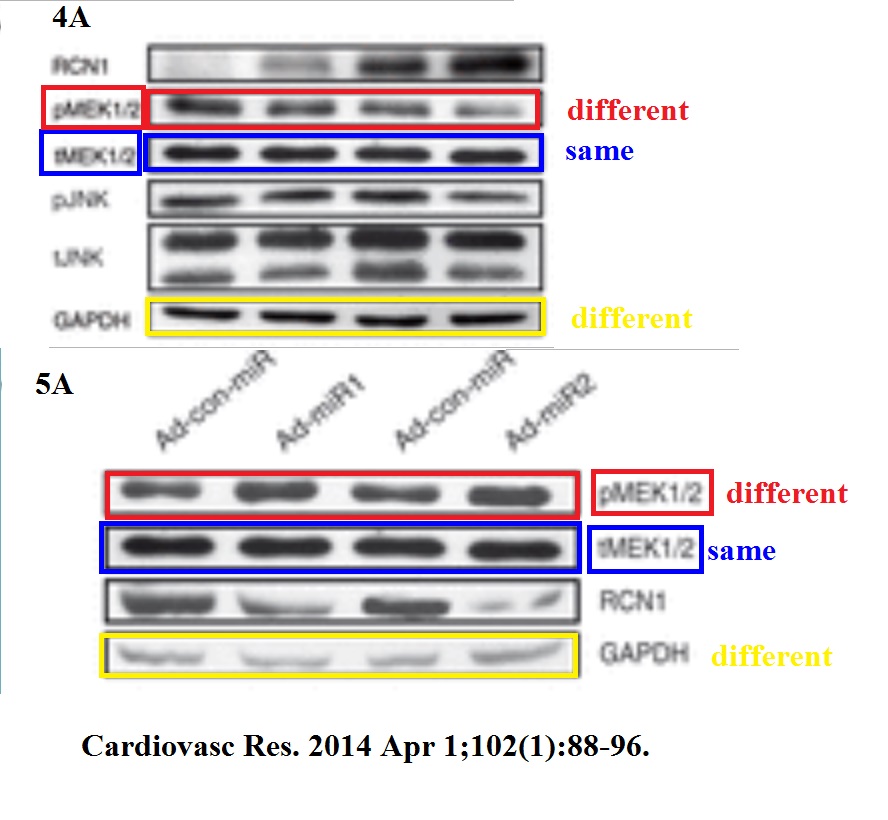
It was corrected in October 2020, in parallel to the first paper above. This time, the notice mentioned an investigation by the University of Göttingen:
“The example images for the loading controls GAPDH in Figure 1E were duplicated representations of the same gel in lanes 1/2 and 3/4. The loading controls for tMek1/2 in Figures 4A and 5A were duplications of the same gel. The authors provided the original uncropped blots to demonstrate these were correct and that the errors occurred by accident when compiling the figures. The original western blots were re-analysed by the authors and by an independent laboratory. This analysis excluded that the error extended to the cumulative data and confirmed that the quantitative analysis of the cumulative and hence the conclusions are valid.
This process was overseen by an Ombudsperson of the University Medical Center Göttingen, and also by the ESC Journals Family Ethics Committee, which recommended this resolution.”
I wrote to the university Ombudsman, and was told to go complain to the ombudsman of the university clinic. Who never replied.
As a reminder: all of the above PubPeer evidence was available to Göttingen Ombudsman during the 2020 investigation. They chose against any action, because how do you explain duplicated gel bands as an accident which never affected any conclusions?
Certainly not forgeries
Now, meet the German emeritus professor of pharmacology Michael Wink. Until his retirement in 2019, he used to be dean and vice-dean of the faculties of pharmacology and life sciences at the University of Heidelberg. Wink trained many clever and determined young people from all over the world in his lab, when they went back to their home countries, they thanked their mentor by inviting him to co-author some dodgy stuff they may have purchased off a papermill.
Thanks to them and to Cheshire’s sleuthing, Wink now has a PubPeer record.
Some examples, a set of four papers:
- Mansour Sobeh, Mona F. Mahmoud , Ganna Petruk , Samar Rezq , Mohamed L. Ashour , Fadia S. Youssef , Assem M. El-Shazly , Daria M. Monti , Ashraf B. Abdel-Naim , Michael Wink Syzygium aqueum: A Polyphenol- Rich Leaf Extract Exhibits Antioxidant, Hepatoprotective, Pain-Killing and Anti-inflammatory Activities in Animal Models Frontiers in Pharmacology (2018) doi: 10.3389/fphar.2018.00566
- Mansour Sobeh , Fadia S. Youssef , Ahmed Esmat , Ganna Petruk, Ahmed H. El-Khatib , Daria Maria Monti , Mohamed L. Ashour , Michael Wink High resolution UPLC-MS/MS profiling of polyphenolics in the methanol extract of Syzygium samarangense leaves and its hepatoprotective activity in rats with CCl4-induced hepatic damage Food and Chemical Toxicology (2018) doi: 10.1016/j.fct.2018.01.031
- Mansour Sobeh , Ahmed Esmat , Ganna Petruk, Mohamed A.O. Abdelfattah , Malak Dmirieh , Daria Maria Monti , Ashraf B. Abdel-Naim , Michael Wink Phenolic compounds from Syzygium jambos (Myrtaceae) exhibit distinct antioxidant and hepatoprotective activities in vivo Journal of Functional Foods (2018) doi: 10.1016/j.jff.2017.12.055
- Mansour Sobeh, Marwa S. Hamza , Mohamed L. Ashour , Mona Elkhatieb , Mohamed A El Raey , Ashraf B. Abdel-Naim , Michael Wink A Polyphenol-Rich Fraction from Eugenia uniflora Exhibits Antioxidant and Hepatoprotective Activities In Vivo Pharmaceuticals (2020) doi: 10.3390/ph13050084

I wrote to Wink, he replied swiftly. Translated:
“my papers are definitely not coming from papermills; I know which experiments we have done and which papers we have written. These papers all come from ongoing collaborations with former PhD students who did their doctorates with me. The extracts were obtained in my laboratory in Heidelberg and some of them were also analyzed. The question of whether and how secondary metabolites act as antioxidants is part of my current field of research.
The image problems found by Pubpeer have a simple explanation.
At the time, we had a whole series of medicinal plants under investigation at the same time, which were then examined histologically in Egypt. As my colleagues told me, they had used a control group of test animals for all the experiments. This control group therefore also appears in all the papers. Of course, it was a mistake not to point out that the images had already been used in another paper. We will rectify this immediately.
But they are certainly not forgeries.“
In a later email, Wink declared that Mansour Sobeh, Assem Elshazly, Malak Dimireih, Ganna Petruck and Mohamed Ashour were his former PhD students. I explained to him that there were not just issues of reused control images. See these two papers for example:
- Mansour Sobeh, Mona F. Mahmoud , Mohamed A.O. Abdelfattah , Hesham A. El-Beshbishy , Assem M. El-Shazly , Michael Wink Hepatoprotective and hypoglycemic effects of a tannin rich extract from Ximenia americana var. caffra root Phytomedicine (2017) doi: 10.1016/j.phymed.2017.07.003
- Mansour Sobeh, Mona Mahmoud , Omar Sabry , Rasha Adel , Malak Dmirieh , Assem El-Shazly , Michael Wink HPLC-PDA-MS/MS Characterization of Bioactive Secondary Metabolites from Turraea fischeri Bark Extract and Its Antioxidant and Hepatoprotective Activities In Vivo Molecules (2017) doi: 10.3390/molecules22122089
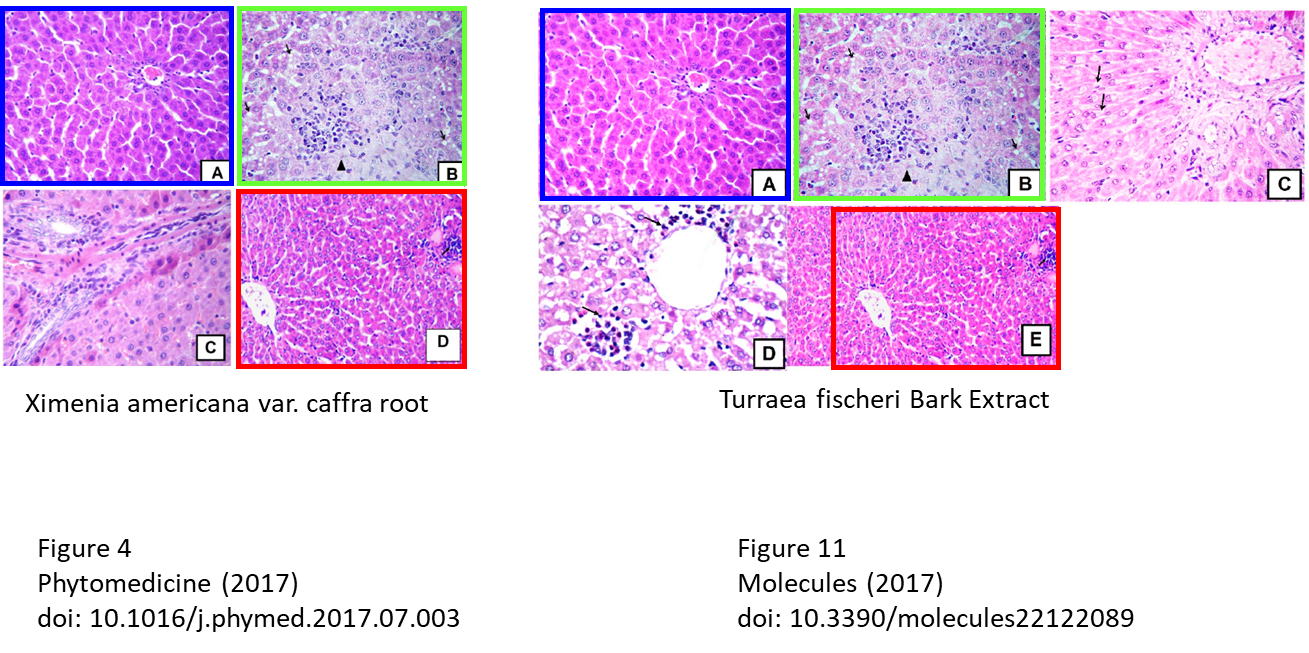
A year ago, Sholto David found stuff in a paper by Wink and his ex-student Sobeh:
Mosad A. Ghareeb , Mansour Sobeh , Walaa H. El-Maadawy, Hala Sh. Mohammed , Heba Khalil, Sanaa Botros , Michael Wink Chemical Profiling of Polyphenolics in and Evaluation of Its Hepato-Renal Protective Potential Against Cyclophosphamide Induced Toxicity in Mice Antioxidants (2019) doi: 10.3390/antiox8090415
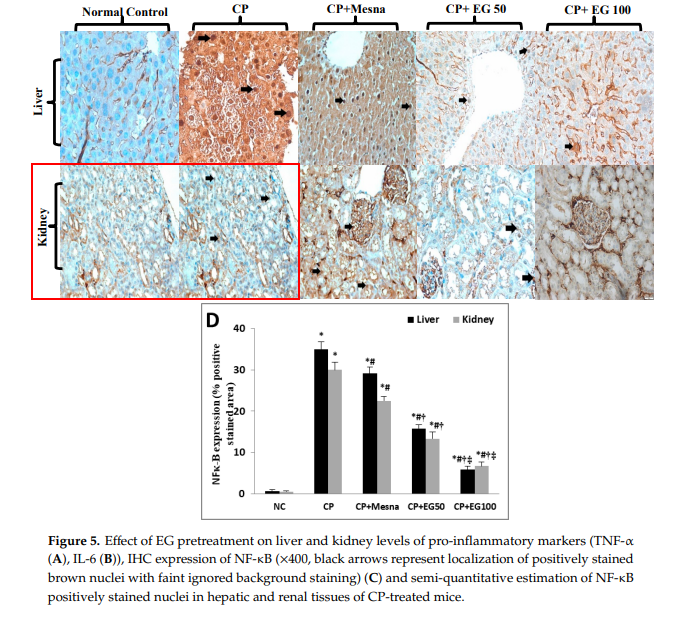
Some more rogue students misbehaving:
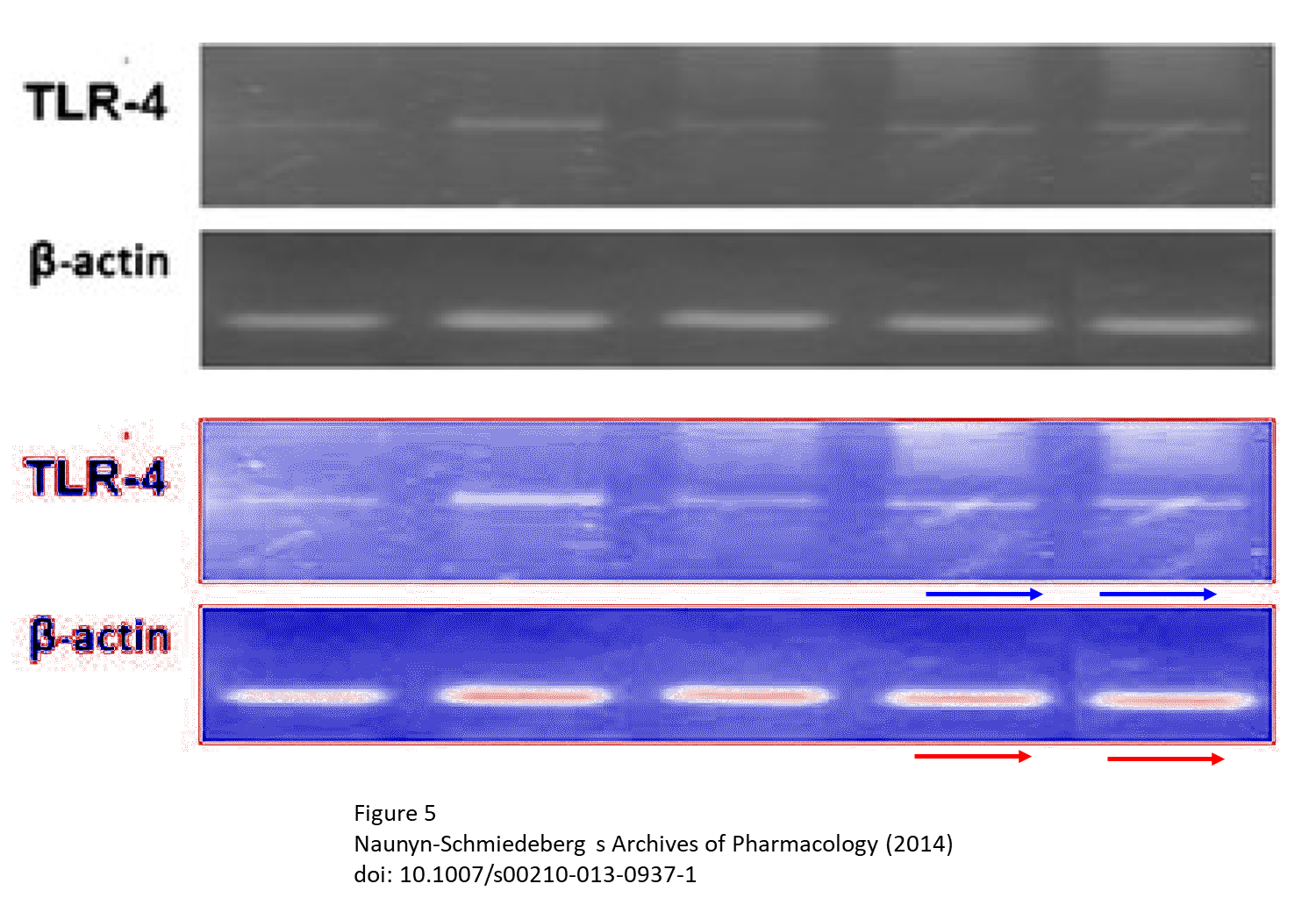
“In Figure 5, it appears that the last two lanes of both bands have been duplicated.”
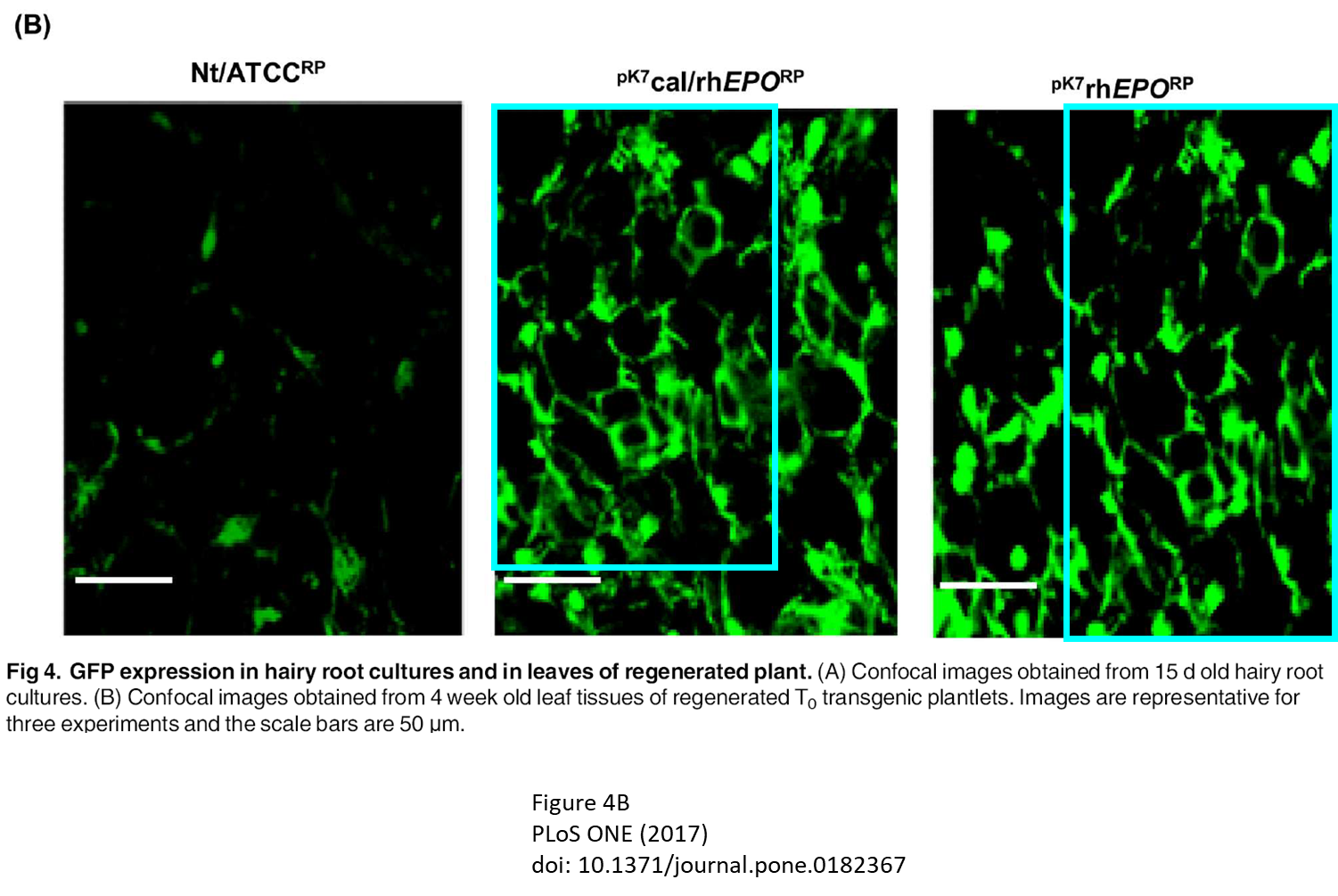
“Two images in Figure 4B appear to show an overlapping field of view, however they are described differently.”
I asked Wink if he knows anyone on this Chinese paper, flagged on Pubpeer by Indigofera tanganyikensis already in June 2021:
Yanfang Sun , Xiaoyan Gao , Pingping Wu , Michael Wink , Jinhua Li , Lulu Dian , Zongsuo Liang Jatrorrhizine inhibits mammary carcinoma cells by targeting TNIK mediated Wnt/β-catenin signalling and epithelial-mesenchymal transition (EMT) Phytomedicine (2019) doi: 10.1016/j.phymed.2019.153015

“In Figure 5B a Western blot has been duplicated and presented as something else.
In Figure 7C a micrograph has been duplicated, modified and presented as something else.”
Wink said the first author Yanfang Sun used to be his postdoc in Heidelberg and that the paper clearly needed to be corrected.
But how come Wink seemed to have forgotten that one of his papers was recently retracted for papermilling? A worldwide collaboration between Heidelberg, Turkey, Hong Kong, Italy, Ecuador, Chile and, I am sad to see several Ukrainians on it:
Javad Sharifi-Rad , Cristina Quispe , Carla Marina Salgado Castillo , Rodrigo Caroca , Marco A. Lazo-Vélez , Halyna Antonyak , Alexandr Polishchuk , Roman Lysiuk , Petro Oliinyk , Luigi De Masi , Paola Bontempo , Miquel Martorell , Sevgi Durna Daştan , Daniela Rigano , Michael Wink , William C. Cho Ellagic Acid: A Review on Its Natural Sources, Chemical Stability, and Therapeutic Potential Oxidative Medicine and Cellular Longevity (2022) doi: 10.1155/2022/3848084
“This article has been retracted by Hindawi, as publisher, following an investigation undertaken by the publisher. This investigation has uncovered evidence of systematic manipulation of the publication and peer-review process. We cannot, therefore, vouch for the reliability or integrity of this article.”
Retraction, 9 January 2024
Wink explained:
“I was involved in the review on Ellagic acid; I co-wrote it because the topic fits in with my research.
The paper was withdrawn because there were problems with the review process for the special issue; I wasn’t involved in that.“
Really, a perfectly good study retracted because the editors screwed things up? Funny, the first author Javad Sharifi-Rad is a known papermill fraudster, see his PubPeer record here, and also read here:
The Highly Cited Researchers of Clarivate
“here is my advice to Clarivate: better get lost. ” – Alexander Magazinov
Wink then wrote to me:
“I have since learned that Javad Sharifi is an obvious fraudster. I didn’t know that when I was asked to contribute to the review. It made sense, as we have been researching polyphenols for years. Academically, the review was fine and I made a few corrections and incorporated new sections. There wasn’t really anything that made me suspicious.
Now I’m smarter – so it’s certainly okay that the paper was retracted.”
Let me think this through. Papermill fabrications by fraudsters like Sharifi-Rad are of such excellent scientific quality that even renowned German experts like Professor Wink don’t notice anything out of order and declare it as “fine”, after “a few corrections”? Given how much such professors have to correct and reject in an average postdoc manuscript, are papermillers maybe the better scientists then? Instead of fighting papermills, should we instead sack everyone else and leave science to papermillers alone?
Wink also has papers with a certain Farukh Sharopov, whom the emeritus professor declared to have graduated as his PhD student in 2015 (“In my case, he wrote his own papers and did his own chemical analyses. I don’t know exactly what he did after that“):
Agustina Dwi Retno Nurcahyanti , Adeline Jap , Jullietta Lady , Deka Prismawan , Farukh Sharopov , Rachid Daoud , Michael Wink , Mansour Sobeh Function of selected natural antidiabetic compounds with potential against cancer via modulation of the PI3K/AKT/mTOR cascade Biomedicine & Pharmacotherapy (2021) doi: 10.1016/j.biopha.2021.112138
The review paper has almost 500 references. Alexander Magazinov commented that 3 of them were meanwhile retracted. Sharopov was seen publishing with Sharifi-Rad, William Cho and other papermillers: the Frenchman Christophe Hano, and the Romanian anti-vaxxers Daniela Calina and Anca Oana Docea, read about them here:
Elsevier’s Pandemic Profiteering
Aristidis Tsatsakis, Konstantinos Poulas, Ronald Kostoff, Michael Aschner, Demetrios Spandidos, Konstantinos Farsalinos: you will need a disinfecting shower once you read their papers.
Choi did not commit research misconduct
Augustine MK Choi is in the news again. Choi later resigned as dean and retracted several papers, the retraction notices referred to an institutional investigation.
O du lieber Augustine MK Choi
Augustine Choi is Dean of Weill Cornell and a misunderstood genius. He discovered that carbon monoxide is a cure for all possible diseases, just add a bit of Photoshop.
The Cornell Daily Sun wrote on 20 March 2024 (as usual, no mention of For Better Science):
“Now, People for the Ethical Treatment of Animals is calling for the federal government to ban him from performing future experiments on animals.
Since 2002, nine studies authored by Choi have been retracted, and one study was withdrawn from published research journals. PETA provided The Sun with a list of each retracted article. […]
Choi’s retractions have occurred periodically over the past decade, with one paper retracted and republished in 2015 and another study retracted in 2020. […] This prompted Cornell to conduct an investigation in 2020 that analyzed both publications and lab practices. It found Choi did not commit research misconduct.”
Actually, it was yours truly who reported Choi for research misconduct to Cornell’s Chief Research Compliance Officer Thomas Blair in August 2020, who then announced an investigation. The newspaper now quotes a Cornell official that “The report made recommendations for retraction of several papers because certain figures were not reliable, and, given the absence of original data, the scientific record could not be corrected“.
Torturing Small Animals
Animal abuse and bad science go hand in hand. Meet professors Ute Moll, Jordi Muntané, Sam W Lee and others.
Funny how papers were proved to be fraudulent, but no misconduct findings for their authors. But this might change:
“PETA is urging the HHS Office of Research Integrity to investigate the alleged misconduct. […]
In 2021, PETA filed a lawsuit against the NIH, which has to date provided Choi with nearly $77 million in taxpayer money to fund his research despite retractions. They are urging the Office of Laboratory Animal Welfare within the NIH to cease funding and ban Choi from performing further deadly sepsis experiments on animals. “
Data-reliability concerns
Wall Street Journal reports that the superconductor fraudster Ranga Dias has been found guilty of research misconduct by his University of Rochester in USA. That is after the same university declared Dias completely innocent in an earlier investigation. But the retraction of his second superconductor paper, published again in Nature and after Rochester’s whitewashing, crushed the university’s last hopes for making big money with Dias’ fraud. Worse, they started losing money!
Superconductive Fraud: The Sequel
“After the huge box-office success of “Nature 2020: Room-temperature superconductivity in CSH” this March our Nature studios released a sequel with the same star-studded cast: “Nature 2023: Near-ambient superconductivity in N-doped LuHx”. – Maarten van Kampen
“Ranga Dias, a physicist at the University of Rochester in New York, has had at least four papers he co-wrote, including three involving superconductivity, retracted in the past 18 months by the journals that published them. A committee of outside experts tapped by the university “identified data-reliability concerns in those papers,” a Rochester spokesperson told The Wall Street Journal.
“The committee concluded, in accordance with university policy and federal regulations, that Dias engaged in research misconduct,” the spokesperson said in an emailed statement.
Rochester declined to provide the report. “
The university had to return most of the $1.6 million award by the Gordon and Betty Moore Foundation. Dias is now about to lose his job, and maybe the investors of his “Unearthly Materials” will sue him?
Retraction Watchdogging
Nonstandard phrases
It seems Rafael Luque, the King of Papermillers, finally got served his first retraction. He deserves hundreds more.
Zahra Asadi , Sina Dobaradaran , Hossein Arfaeinia , Mohsen Omidvar , Sima Farjadfard , Rauf Foroutan, Bahman Ramavandi , Rafael Luque Photodegradation of ibuprofen laden-wastewater using sea-mud catalyst/H2O2 system: evaluation of sonication modes and energy consumption Environmental Science and Pollution Research (2022) doi: 10.1007/s11356-022-23253-9
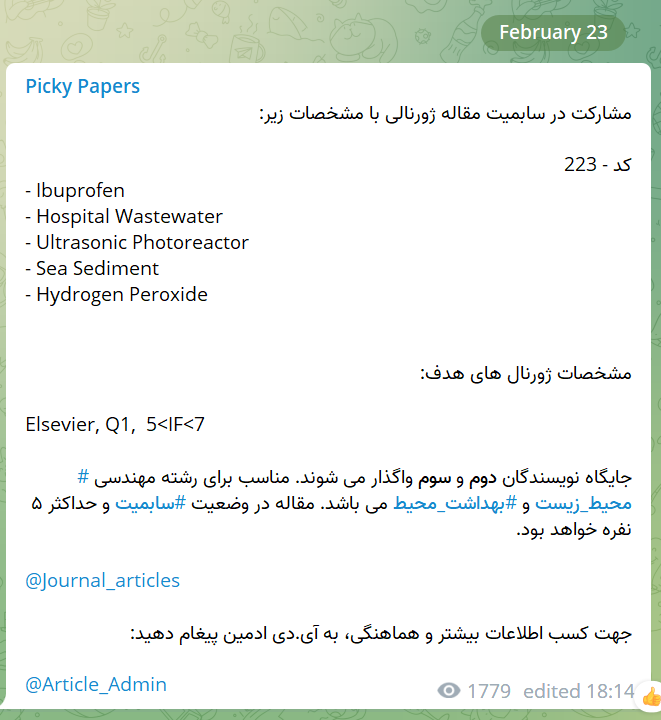
Nick Wise: “On the 23rd of February 2022 an advert was placed on Telegram offering authorship of a paper with keywords matching this one.”
It also contained this gem: “The structure of the catalyst, as well as the particle size, was determined using vegetative electron microscopy“
The Retraction was published on 26 March 2024:
“The Publisher has retracted this article in agreement with the Editor-in-Chief. An investigation by the publisher found a number of articles, including this one, with a number of concerns, including but not limited to compromised peer review process, inappropriate or irrelevant references, containing nonstandard phrases or not being in scope of the journal. Based on the investigation’s findings the publisher, in consultation with the Editor-in-Chief therefore no longer has confidence in the results and conclusions of this article.
Rafael Luque agrees with the retraction. Mohsen Omidvar, Bahman Ramavandi, Zahra Asadi, Sina Dobaradaran, Sima Farjadfard, and Rauf Foroutan disagree with the retraction. Hossein Arfaeinia has not replied to correspondence from the publisher.”
Elsevier chooses Papermills and Patriarchy, Chief Editor resigns
“Among these candidates that you “vetted” were people with no expertise in the field (either 0 or 1 publication), people with longer PubPeer profiles and more retractions than most people have articles on their CVs, and people whose names appear as authors on sold paper sites. ” – Jillian Goldfarb
Student, meet bus
First retraction also for Rajesh Katare, former mentee of the cheater couple Paolo Madeddu and Costanze Emanueli at the University of Bristol in UK. Katare is now associate professor at the University of Otago in New Zealand, but this will hopefully change soon.
Bristol Madness
“People should believe in themselves; to search the treasures that they have inside and use them to reinterpret the role.” – Paolo Madeddu,, Professor and Chair at University of Bristol.
Katare already had to withdraw a paper in 2019, and several more on PubPeer await to be retracted.
Pujika Emani Munasinghe , Eng Leng Saw , Matthew Reily-Bell , Devin Tonkin , Yoshihiko Kakinuma, Martin Fronius , Rajesh Katare Non-neuronal cholinergic system delays cardiac remodelling in type 1 diabetes Heliyon (2023) doi: 10.1016/j.heliyon.2023.e17434
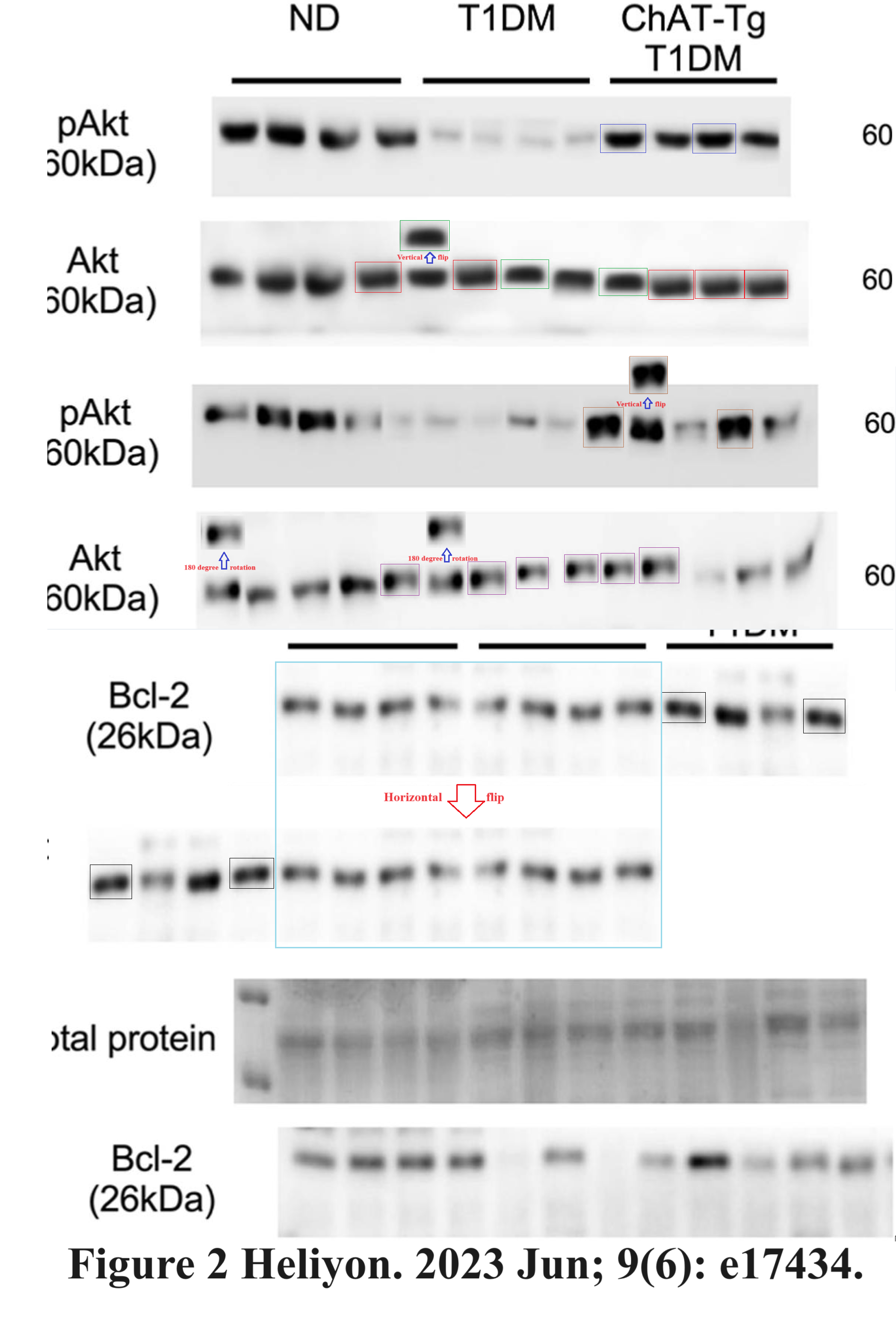
The Retraction was published on 25 March 2024:
“This article has been retracted at the request of the Editor-in-Chief.
The journal was alerted to an associated PubPeer post in which multiple image similarities had been described in the Western blots within Figure 2A+B, as detailed here: https://pubpeer.com/publications/9D6B23C0DB3B2722359B87B93A4F4B. Independent analysis by the journal confirmed these suspected image duplications. The journal requested the authors to provide an explanation to these concerns and associated raw data. Authors provided raw data files, and close inspection of the uncropped Bcl-2 (4 weeks) blot, shown in Fig. 2B, revealed two additional bands with surrounding rectangular anomalies that appear to be duplicated several times to create some of the remaining blot. The corresponding authors, Dr Fronius and Dr Katare, informed the journal that the original images within the study were provided by the first author as part of their MSc thesis, and stated: “Upon further investigation, with assistance from some of our colleagues at the University, we identified additional potential issues with some of the blots in the student’s MSc thesis.”. The Editor-in-Chief assessed the case and decided to retract the article.”
Katare behaved exemplarily, like a proper dignified professor. When caught with masses of fake data in his papers, he valiantly fought back to restore his honour and fearlessly threw a former (female) student under the bus. Instead of being investigated himself, Katare heroically took over the investigation!
Student, Meet Bus
What led to retraction of the Sensei RNA paper by Arati Ramesh in Bangalore: the “factually inaccurate, anonymous, and unverified” version, which “quite frankly, can be termed slander”. And a guest post by “Paul Jones” at the end!
Science Breakthroughs
Four cups a day keep the funeral away
Dutch scientists discovered that failing to drink enough coffee will give you bowel cancer and kill you.
A press release by the Wageningen University:
“Previous research showed that coffee consumption reduced the risk of intestinal cancer. This new study, published in the International Journal of Cancer, investigated whether coffee also impacts the disease’s progression. The researchers compared coffee intake to the return of the disease after remission and the mortality among patients.
A total of 1,719 patients were questioned about their lifestyle, including the question of how much coffee they drank. The results show that patients who drink more than four cups a day have a 37% lower chance of relapse than those who drink less than two cups a day. Moreover, the mortality rate was lowest among those who consumed between three and five cups a day.”
Here is the paper, which used the data from colon cancer patients of the larger clinical trial ‘COlorectal cancer: Longitudinal, Observational study on Nutritional and lifestyle factors that influence colorectal tumor recurrence, survival and quality of life’ (COLON):
Abisola M. Oyelere , Dieuwertje E. Kok , Daniel Bos , Marc J. Gunter , Pietro Ferrari , Pekka Keski‐Rahkonen , Johannes H. W. De Wilt , Henk K. Van Halteren , Ewout A. Kouwenhoven , Fränzel J. B. Van Duijnhoven , Ellen Kampman Coffee consumption is associated with a reduced risk of colorectal cancer recurrence and all‐cause mortality International Journal of Cancer (2024)
doi: 10.1002/ijc.34879

Important is that you must drink the “optimal at 3–5 cups/d” amount, drinking too little or too few coffee will kill you: “Our results suggest that coffee consumption may be associated with a lower risk of CRC recurrence and all-cause mortality.”
I thank all my donors for supporting my journalism. You can be one of them!
Make a one-time donation:
I thank all my donors for supporting my journalism. You can be one of them!
Make a monthly donation:
Choose an amount
Or enter a custom amount
Your contribution is appreciated.
Your contribution is appreciated.
DonateDonate monthly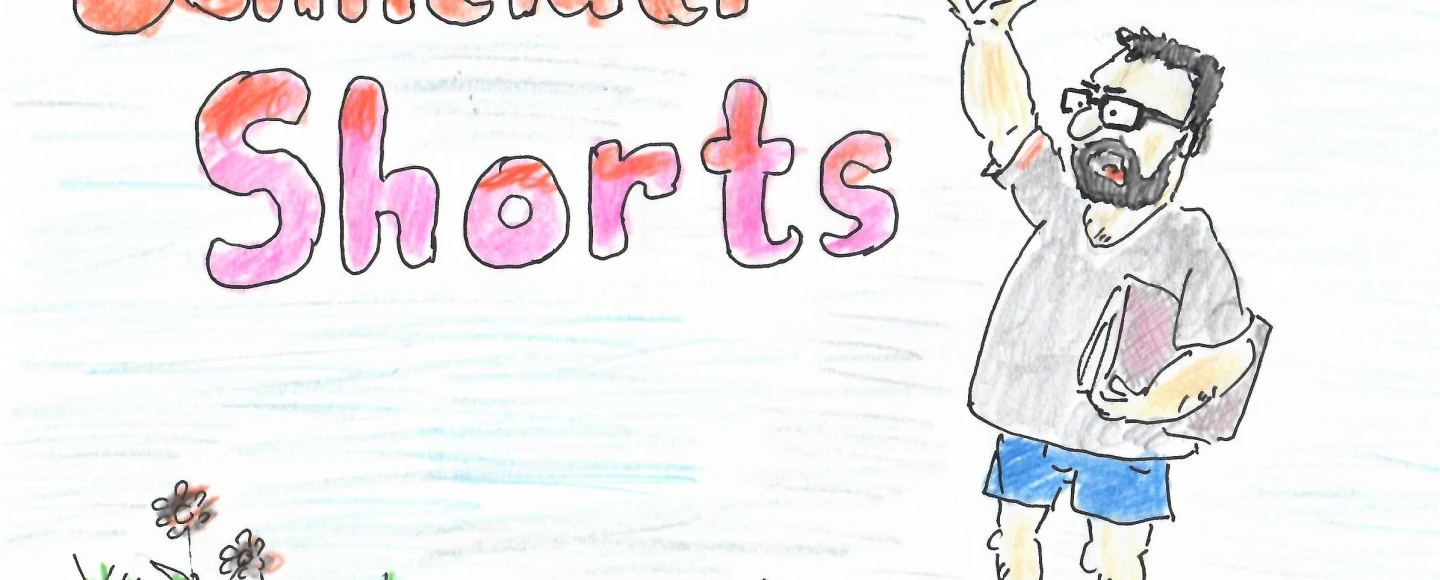

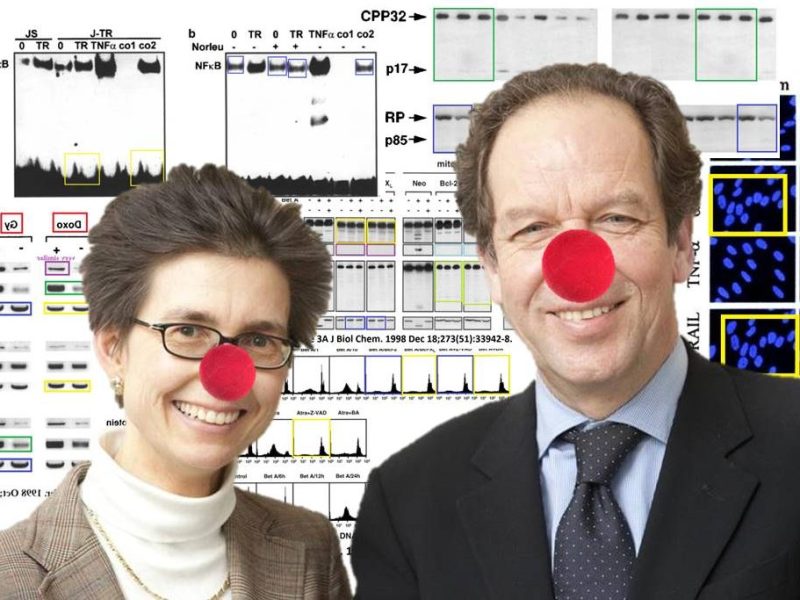
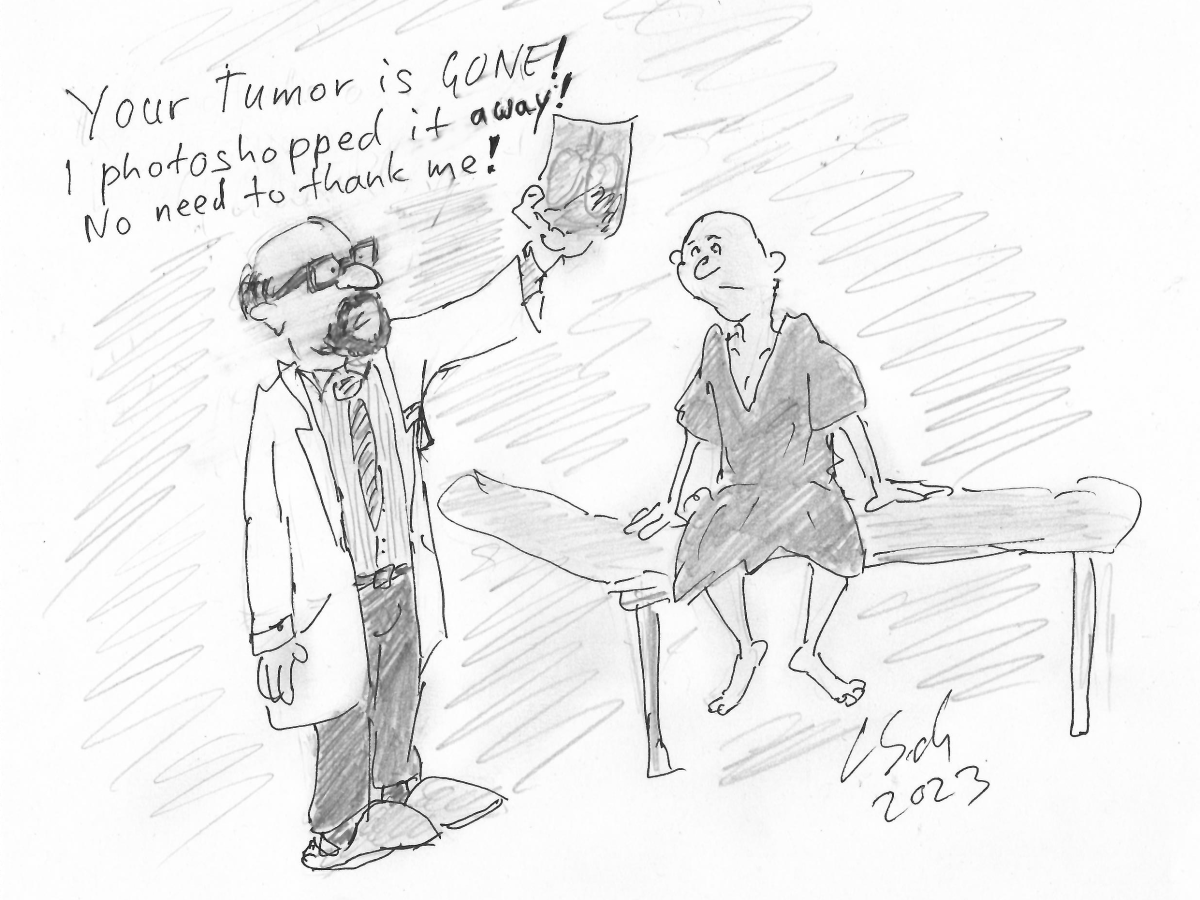








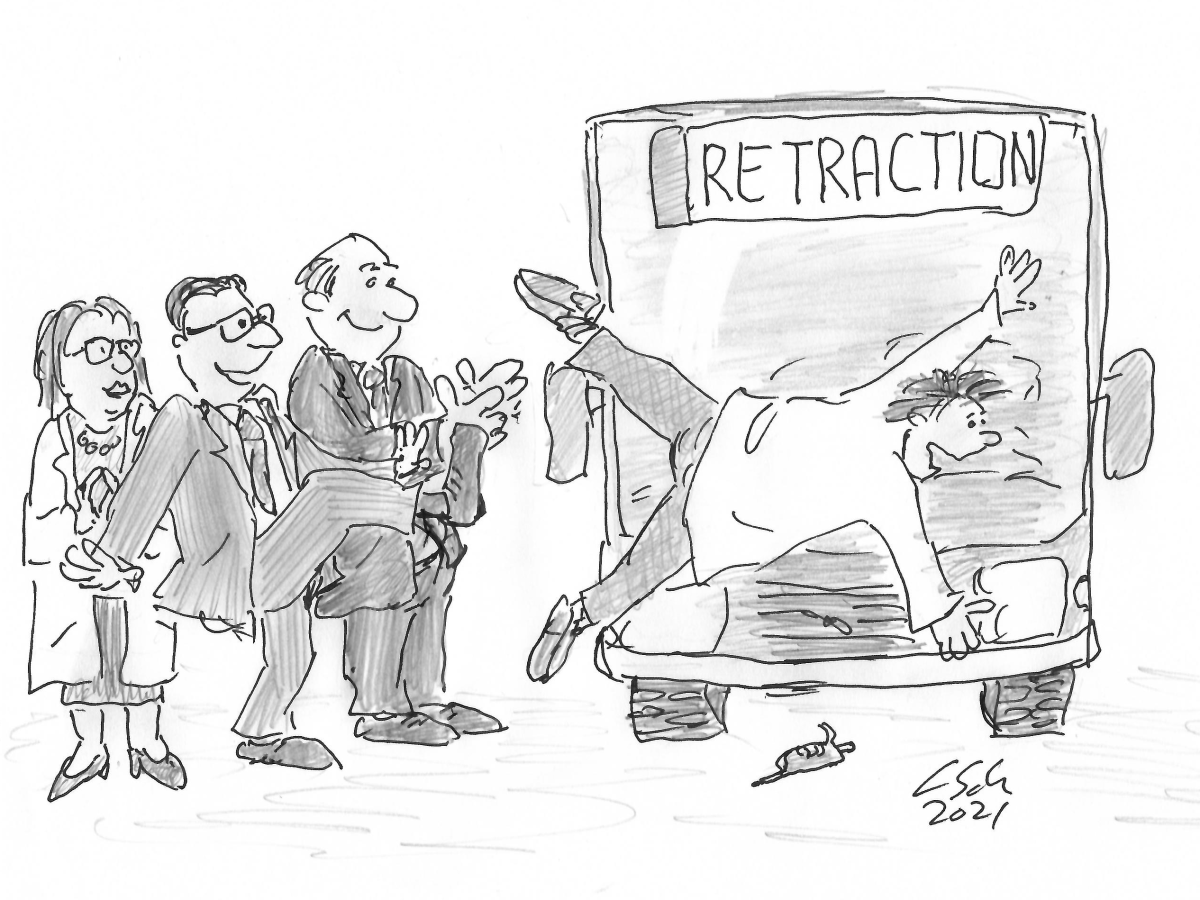

Luque already had 2 retractions apparently, but for some reason they were/are not in the retraction watch database.
Retraction 1: [Retracted] Facile and straightforward synthesis of Hydrazone derivatives (hindawi.com)
Retraction 2: RETRACTED: Photoactive CeO2/SBA-15 functionalized materials as efficient systems for mono-dehydration of sugar alcohols – ScienceDirect
So total number of retractions is 3 now!
LikeLiked by 1 person
Yes the RW database doesn’t show everything. It cost $700k in grants.to build and it sold well afterwards to Crossref.
https://www.crossref.org/blog/news-crossref-and-retraction-watch/
LikeLike
I actually wondered about that. Does it still work if you send in retracted papers? RW used to add them, but now with Crossref taking over?
Many retractions are still not in the database.
LikeLike
“Klaus-Michael Debatin, the grey eminence of Germany’s dodgy cancer research, retires. No, not because of his massive PubPeer record or because of the public scandal of his mentee Simona Fulda, who had to resign as President of the University of Kiel.Simone Fulda”.
Germany is a federal Republic. Different States can have their own standards. The Universities of Ulm and Kiel are in different States, both are State Universities. Ultimately the State Governments have responsibility. In Kiel, Schleswig-Holstein, the minister for education, Karin Prien, gave a coded, but clear public statement that Simone Fulda’s problematic data could derail the University of Kiel’s attempts to secure funding, and should resign in the best interests of the University. I believe that Simone Fulda resigned the next day.
LikeLike
Gender and Diversity in Ulm, now.
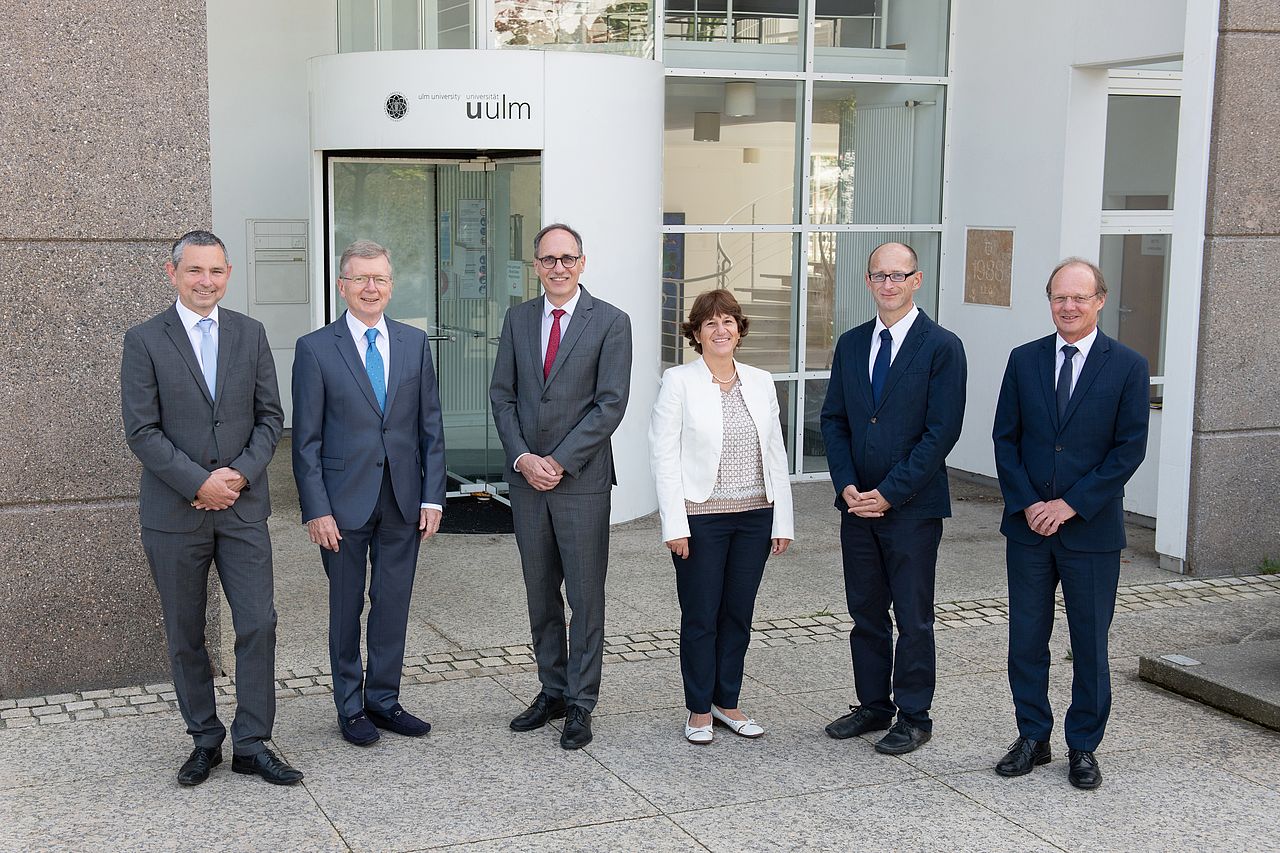
The only woman is tasked with teaching (because male professors hate teaching).
LikeLike
Germany has a history of letting Cancer Quacks get away with it because they “believed what they were doing”.
https://en.m.wikipedia.org/wiki/Josef_Issels
LikeLike
Klaus-Michael Debatin might be just like Professor Herrmann.
https://www.ncbi.nlm.nih.gov/pmc/articles/PMC381088/
“In 2000, a task force of scientists engaged by the Deutsche Forschungsgemeinschaft (the German Research Foundation) concluded that 94 of Professor Herrmann’s 347 research papers contained manipulated data (BMJ 2000;321:71). Only 132 publications were cleared of any suspicion of fraud.”
but not guilty.
LikeLike
Having figured out that Ulm is not in Bavaria (don’t laugh at my immigrant ignorance) I wrote to the Green-led ministry for research of Baden Württemberg. Let’s see.
(Writing to Bavarian government would be not just pointless, it would give those people dangerous ideas).
LikeLike
Amazing how they always get away with it and ‘public interest was minimal’, yeah, of course, nobody knows about it when it is not shown in the media.
LikeLike
https://www.nature.com/articles/415003a
“Ulf Rapp, a cell biologist from the University of Würzburg and head of the task force, complained about the “unauthorized manipulation” of the task force’s report in a 19 November letter, signed by four other task-force members, to DFG president Ernst-Ludwig Winnacker.’
“Unauthorized manipulation”, surely Ulf Rapp meant authorized manipulation. That is the German way.
LikeLike
Draw your own conclusions.
I asked Midjourney to draw my conclusions for me. The results were spectacular.
LikeLiked by 1 person
Another Science Breakthrough
AD cured… again! siRNA, Nanoparticles…
Rejuvenating aged microglia by p16ink4a-siRNA-loaded nanoparticles increases amyloid-β clearance in animal models of Alzheimer’s disease
https://molecularneurodegeneration.biomedcentral.com/articles/10.1186/s13024-024-00715-x
LikeLike
Sounds like a papermill product. But hey, many buzzwords ticked, journal happy.
LikeLike
Interestingly, Sabine Conrad and Thomas Skutella continue to publish together after the retraction of their testis pluripotency paper. If either would have been unwittingly fooled into signing off fraudulent data for the testis paper (the classic “first author under the bus” story), one would assume they would stop collaborating. Skutella still publishes vigorously on many subjects with teams in Heidelberg, Iran and China; Conrad seems to have largely stopped contributing to papers.
LikeLike
I fear what would become of German science were it to cease collaboration with Iran and China.
A total collapse?
https://pubmed.ncbi.nlm.nih.gov/?term=Skutella%2C+Thomas%5BAuthor%5D&sort=date
LikeLike
Han Brunner, https://www.ru.nl/en/people/brunner-h , a full professor for already many years at Radboud University, The Netherlands, fails to declare at his university homepage, most likely for already several years, that he has a side-job at LOWI, the national advisory board for research integrity in The Netherlands. The annual reports of LOWI reveal that Han Brunner is a member of LOWI since 1 September 2020. It also seems to me that his list with side activities might be outdated.
It is mandatory in The Netherlands, and already for many years, that all full professors of all Dutch universities are fully transparant about all of their side-activities and that their university homepage always lists an up-to-date overview of all of their side-activities.
I fail to understand how this can happen with a member of LOWI http://www.lowi.nl
LikeLike
See https://nos.nl/nieuwsuur/artikel/2452412-minister-grijpt-in-belangen-wetenschappers-openbaar-na-onduidelijkheid-over-bijbanen for backgrounds [in Dutch, with links to other news items about this topic, also in Dutch].
LikeLike
An academic function at LOWI is NOT an employment,. You discovered nothing. Stop posting nonsense, Klaas. .
LikeLike
Michael Wink? Think I know him from the Storch/Welsch/Wink “Evolutionsbiologie”-Volumes. First two editions were pretty bad (I had no desire for the third one), but back then, you had no choice in Germany (means, the alternative was Ulrich Kutschera’s pathetic writing exercise-stuff).
Just looked it up, Wink also wrote this one:
Wie man Männer in Schweine verwandelt und wie man sich vor solch üblen Tricks schützt. Hirzel-Verlag, Stuttgart 2020
Next in line: “How to cock up your publication list, and how to protect yourself from detection”
LikeLike
Good to hear German evolutionary biology is in good hands.
LikeLike
After WWII, until he died in 1976, German evolutionary biology was dominated by NSDAP-hero Adolf Remane. After that, Volker Storch sung the praises of Remane again and again, although Remane never catched up with the New Synthesis.
Remane/Storch/Welsch-volumes became Storch/Welsch/Wink at last. What a proud tradition… I wish them a pleasant retirement!
LikeLiked by 1 person
Here are two recent statements from Debatin in Laborjournal (March 21, 2024), which are more than rediculous and cannot be surpassed in absurdity: „Seit ich im Labor Verantwortung trage, habe ich die Qualitätssicherung so gehandhabt, dass alle Daten immer öffentlich vor allen diskutiert wurden, inklusive Originaldaten – zum einen, um Projekte besser evaluieren zu können, zum anderen um Fehler und Möglichkeiten von Manipulationen zu minimieren“, sagt Debatin. Intentionelle Fälschung schließe er daher komplett aus.“
„Unsere gemeinsamen Publikationen sind in den letzten 25 Jahren hundertfach zitiert und reproduziert worden. Niemand hat Fehler gefunden“. Fact is that many publications are highly cited because key findings in these publications could not be reproduced by others.
LikeLike
Why am I not surprised that the boys of Laborjournal once again defend an old male German professor from my evil slander….
https://www.laborjournal.de/rubric/hintergrund/hg/m_hg_24_03_04.php
In fact, Laborjournal is even afraid to mention me. Unlike all other media reporting about the Fulda affair.
LikeLike